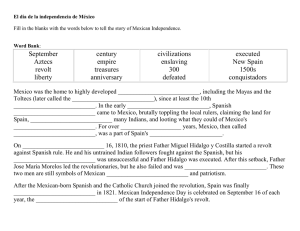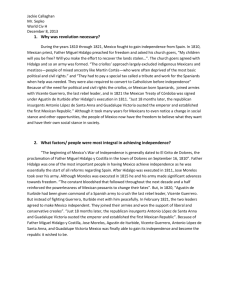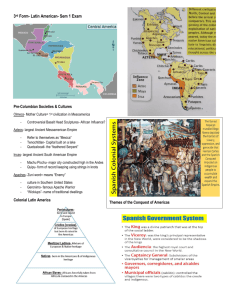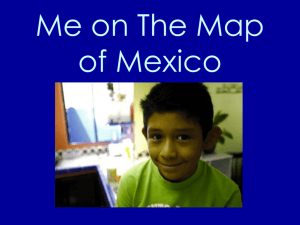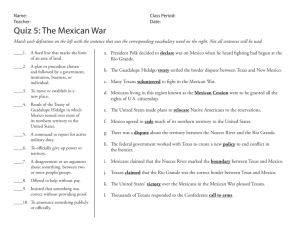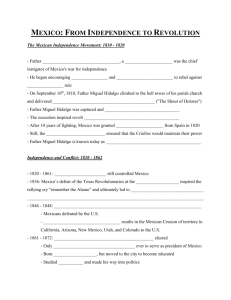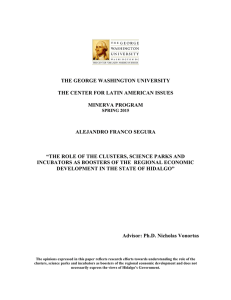In the early nineteenth century, Mexico, with a little influence... and France, began talking about ...
advertisement
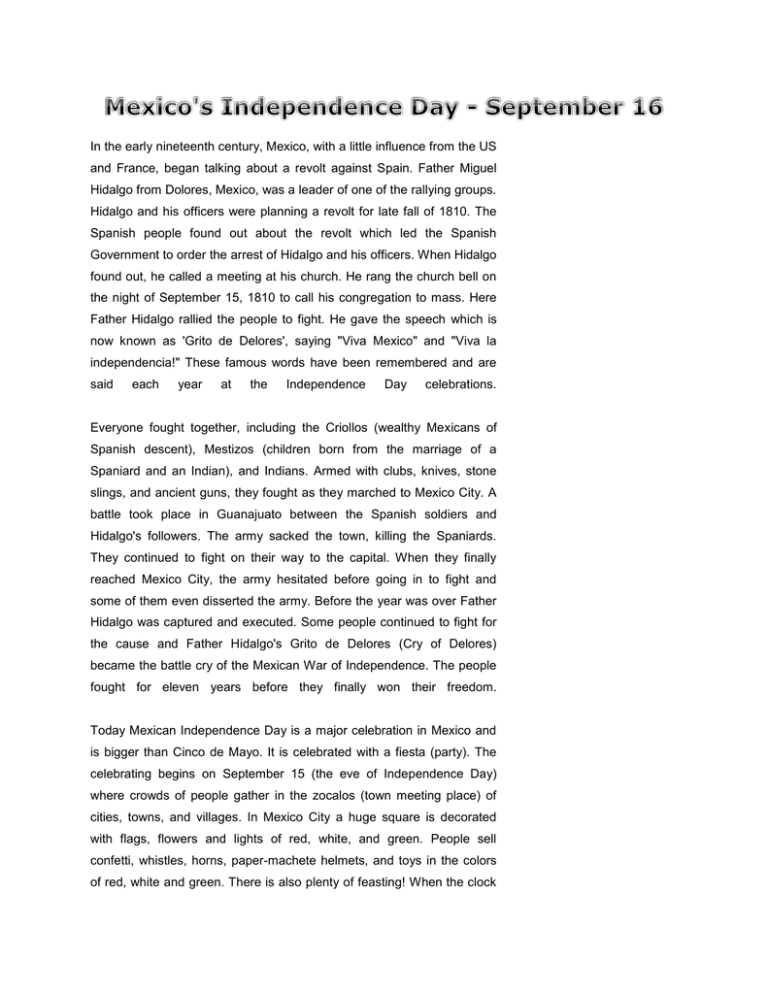
In the early nineteenth century, Mexico, with a little influence from the US and France, began talking about a revolt against Spain. Father Miguel Hidalgo from Dolores, Mexico, was a leader of one of the rallying groups. Hidalgo and his officers were planning a revolt for late fall of 1810. The Spanish people found out about the revolt which led the Spanish Government to order the arrest of Hidalgo and his officers. When Hidalgo found out, he called a meeting at his church. He rang the church bell on the night of September 15, 1810 to call his congregation to mass. Here Father Hidalgo rallied the people to fight. He gave the speech which is now known as 'Grito de Delores', saying "Viva Mexico" and "Viva la independencia!" These famous words have been remembered and are said each year at the Independence Day celebrations. Everyone fought together, including the Criollos (wealthy Mexicans of Spanish descent), Mestizos (children born from the marriage of a Spaniard and an Indian), and Indians. Armed with clubs, knives, stone slings, and ancient guns, they fought as they marched to Mexico City. A battle took place in Guanajuato between the Spanish soldiers and Hidalgo's followers. The army sacked the town, killing the Spaniards. They continued to fight on their way to the capital. When they finally reached Mexico City, the army hesitated before going in to fight and some of them even disserted the army. Before the year was over Father Hidalgo was captured and executed. Some people continued to fight for the cause and Father Hidalgo's Grito de Delores (Cry of Delores) became the battle cry of the Mexican War of Independence. The people fought for eleven years before they finally won their freedom. Today Mexican Independence Day is a major celebration in Mexico and is bigger than Cinco de Mayo. It is celebrated with a fiesta (party). The celebrating begins on September 15 (the eve of Independence Day) where crowds of people gather in the zocalos (town meeting place) of cities, towns, and villages. In Mexico City a huge square is decorated with flags, flowers and lights of red, white, and green. People sell confetti, whistles, horns, paper-machete helmets, and toys in the colors of red, white and green. There is also plenty of feasting! When the clock strikes eleven o'clock the crowd gets silent. On the last strike of eleven the president of Mexico steps out on the palace balcony, and rings the historic liberty bell that Father Hidalgo rang to call the people. Then the president gives the Grito de Delores. He shouts "Viva Mexico" "Viva la independencia" and the crowd echoes back. People do this at the same time all across Mexico. While the crowd says this they fill the air with confetti, streamers and hoopla. Castillos explode in showers of red, white, and green. The actual day of September 16 is similar to July Fourth in the US. There are rodeos, parades, bullfights, horseback rider performances and grand feasts. The statues in memory of Father Hidalgo are decorated with red, white, and green flowers. The Mexican Flag is made up of green, white, and red. The green is on the left side of the flag and symbolizes independence. White is the color in the middle of the flag and symbolizes religion. The red is on the right side of the flag and symbolizes union. These colors are used often in decorating for the Mexican Independence Day fiesta.
